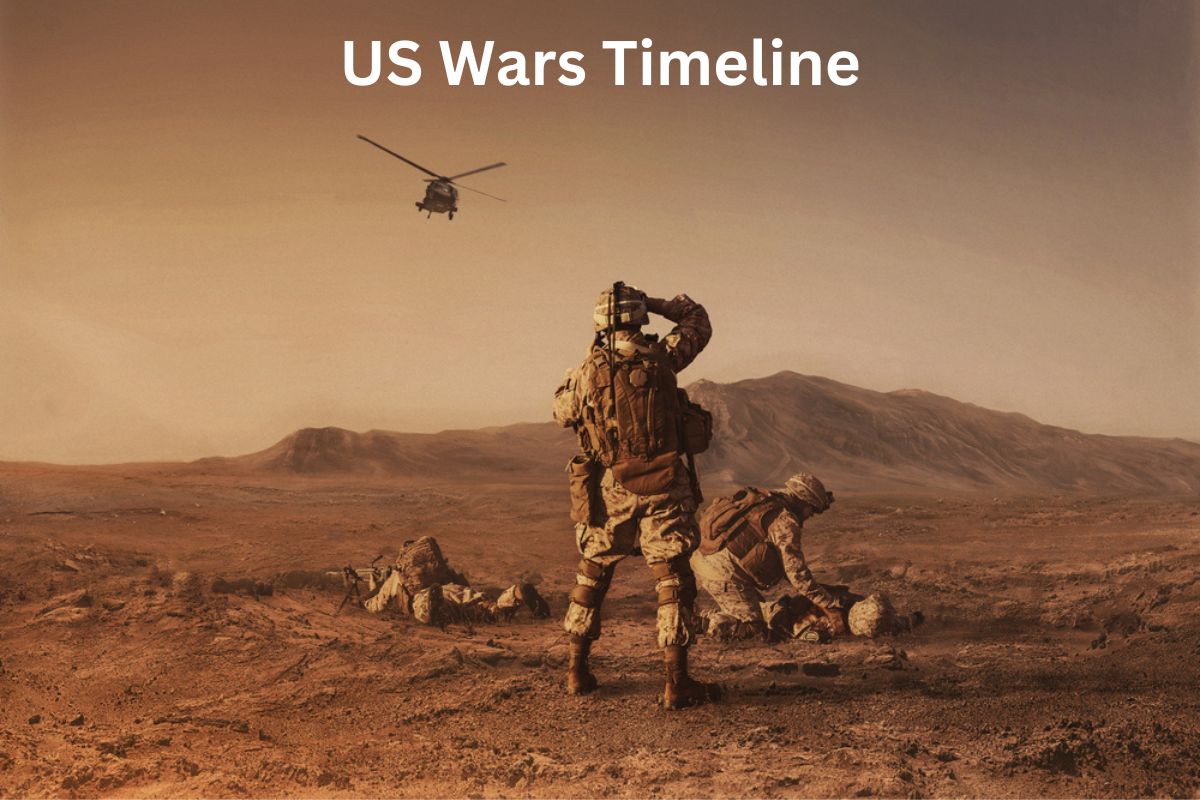The history of the United States is marked by a series of significant military conflicts and wars, each with its own unique causes, consequences, and impact on the nation’s development.
From the American Revolutionary War that birthed the nation to the ongoing global efforts in the War on Terror, these conflicts have shaped America’s identity and its role on the world stage.
In this overview, we will explore the key wars and military engagements that have defined the United States from its founding to the present day, highlighting their historical significance and lasting effects.
| Conflict | Years | Description |
|---|---|---|
| American Revolutionary War | 1775-1783 | The American colonies fought for independence from British rule, resulting in the formation of the United States. |
| War of 1812 | 1812-1815 | The United States fought against Great Britain over issues like trade restrictions and British impressment of American sailors. |
| Mexican-American War | 1846-1848 | The U.S. expanded westward by acquiring territory from Mexico, including California, New Mexico, and Arizona. |
| American Civil War | 1861-1865 | A conflict between the northern states (Union) and the southern states (Confederacy) over issues of slavery, states’ rights, and secession. |
| Spanish-American War | 1898 | The United States defeated Spain, resulting in the acquisition of territories such as Puerto Rico, Guam, and the Philippines. |
| World War I | 1917-1918 | The U.S. entered the war on the side of the Allies in response to events in Europe, helping to tip the balance in their favor. |
| World War II | 1941-1945 | The U.S. entered the war after the attack on Pearl Harbor, becoming a key Allied power in both the European and Pacific theaters. |
| Korean War | 1950-1953 | The U.S. and other Western nations intervened to support South Korea against North Korean and Chinese communist forces. |
| Vietnam War | 1955-1975 | The U.S. became involved in the conflict between North and South Vietnam, ultimately withdrawing its forces in 1973. |
| Gulf War | 1990-1991 | The U.S. led a coalition of nations in liberating Kuwait from Iraqi occupation. |
| War in Afghanistan | 2001-2021 | The U.S. launched Operation Enduring Freedom in response to the September 11, 2001 terrorist attacks, leading to a prolonged conflict. |
| Iraq War | 2003-2011 | The U.S. and a coalition of allies invaded Iraq to remove Saddam Hussein from power. |
| War on Terror | Ongoing | The U.S. has been engaged in various military operations and counterterrorism efforts around the world in response to global terrorism threats. |
Timeline of US Wars
American Revolutionary War (1775-1783)
The American Revolutionary War, also known as the American War of Independence, was a pivotal conflict in which thirteen American colonies sought to break away from British colonial rule and establish themselves as the independent United States of America.
The war began in 1775 with the Battles of Lexington and Concord and continued for eight years until the Treaty of Paris in 1783 formally recognized American independence.
Also Read: Spanish-American War Timeline
Key events include the signing of the Declaration of Independence in 1776, the capture of British General Cornwallis at the Battle of Yorktown in 1781, and the involvement of foreign powers like France, which provided crucial support to the American cause.
The war resulted in the birth of the United States as a sovereign nation.
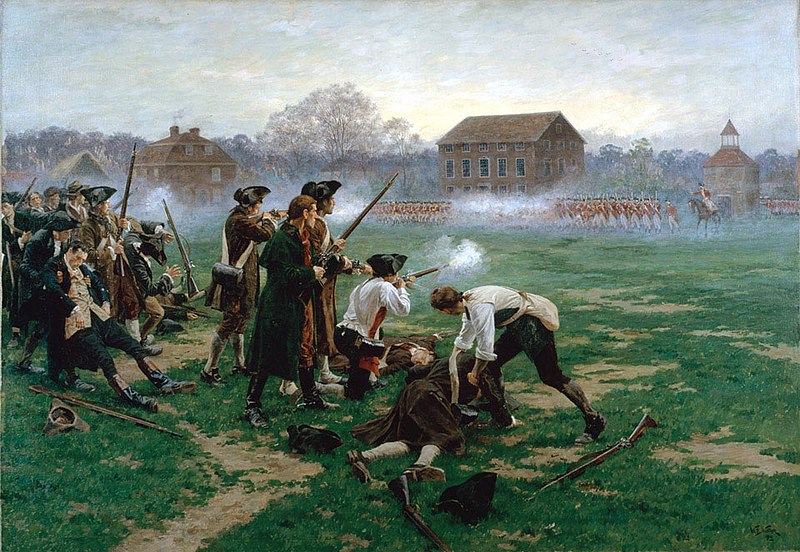
War of 1812 (1812-1815)
The War of 1812 was a conflict between the United States and Great Britain, stemming from various grievances and tensions. The war saw significant naval engagements on the Great Lakes and the Atlantic Ocean, including the famous Battle of Lake Erie and the burning of Washington, D.C. in 1814.

The war had various causes, including British impressment of American sailors, trade restrictions, and American expansionism. The Treaty of Ghent in 1814 ended the war, restoring pre-war borders and failing to address many of the original issues.
However, the war is often considered a formative moment in American history, fostering a sense of national identity and leading to the composition of the national anthem, “The Star-Spangled Banner.”
Mexican-American War (1846-1848)
The Mexican-American War was a conflict between the United States and Mexico over territorial disputes and issues related to the annexation of Texas. It began in 1846 when fighting broke out along the Texas-Mexico border.
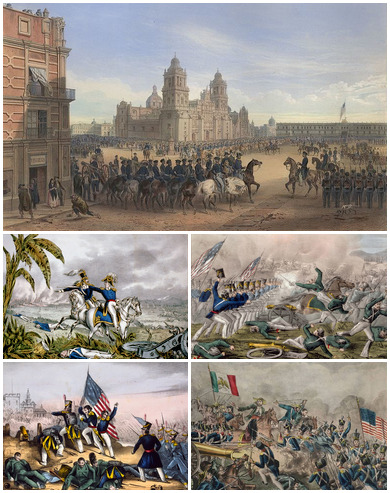
Major battles included the Battle of Palo Alto and the capture of Mexico City by U.S. forces. The war ended in 1848 with the signing of the Treaty of Guadalupe Hidalgo, which ceded a vast amount of Mexican territory to the United States, including California, New Mexico, Arizona, Nevada, Utah, and parts of Colorado, Wyoming, Kansas, and Oklahoma.
The war’s outcome significantly expanded the territorial holdings of the United States and exacerbated tensions over the issue of slavery in newly acquired territories, contributing to the lead-up to the American Civil War.
American Civil War (1861-1865)
The American Civil War was a devastating and pivotal conflict that occurred between the Northern states (the Union) and the Southern states (the Confederacy) in the United States.
The primary cause of the war was the deep-rooted issue of slavery, as well as disputes over states’ rights and the power of the federal government. The war began in 1861 when Confederate forces attacked Fort Sumter in South Carolina. Key battles include the Battle of Gettysburg and the Siege of Vicksburg.

President Abraham Lincoln’s Emancipation Proclamation in 1863 declared the abolition of slavery in Confederate-held territory, transforming the war into a struggle for freedom and the preservation of the Union. The war ended in 1865 with the surrender of Confederate General Robert E. Lee at Appomattox Court House.
It resulted in the abolition of slavery through the 13th Amendment to the U.S. Constitution and the preservation of the United States as a unified nation, but it also left a legacy of deep scars and social and political challenges.
Spanish-American War (1898)
The Spanish-American War was a brief conflict between the United States and Spain, primarily fought over the issues of Cuban independence and the explosion of the USS Maine in Havana Harbor.
In 1898, the United States intervened in support of Cuban insurgents who were seeking independence from Spanish colonial rule. Key events in the war included the Battle of Santiago de Cuba and the destruction of the Spanish fleet.
The war ended with the signing of the Treaty of Paris later that year, in which Spain relinquished control over Cuba, Puerto Rico, Guam, and the Philippines to the United States. This marked the emergence of the United States as a global power and marked the end of the Spanish Empire’s colonial presence in the Americas.
World War I (1917-1918)
World War I, also known as the Great War, was a global conflict that originated in Europe but eventually involved many nations, including the United States.
The U.S. initially remained neutral but was drawn into the war in 1917 due to factors such as unrestricted submarine warfare by Germany and the interception of the Zimmermann Telegram, which revealed a German plan to encourage Mexico to attack the United States.

American forces played a significant role in the later stages of the war, contributing to the Allied victory. Major battles included the Meuse-Argonne Offensive. The war ended with the signing of the Treaty of Versailles in 1919, which imposed harsh terms on Germany and set the stage for the post-war world order.
The U.S. emerged as a major player on the international stage and became a founding member of the League of Nations, although it later chose not to join the organization. The war had profound social and political effects, including changes in women’s roles and the redrawing of national borders in Europe.
World War II (1941-1945)
World War II was a global conflict that involved the majority of the world’s nations, including the United States. The U.S. entered the war on December 7, 1941, following the surprise Japanese attack on Pearl Harbor in Hawaii.
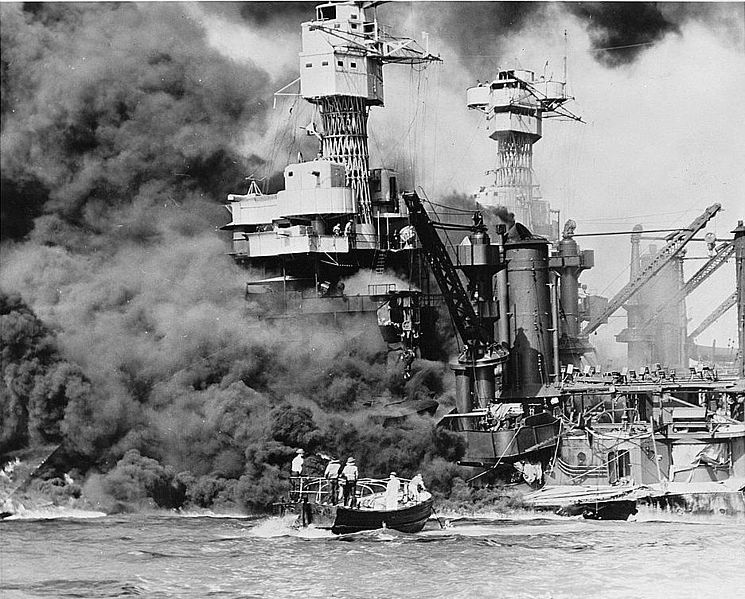
This attack led to a swift declaration of war against Japan by the United States and, in turn, brought the U.S. into the broader conflict. The United States played a central role in the Allied efforts in both the European and Pacific theaters.
In Europe, American forces, along with their British and Soviet allies, launched the D-Day invasion of Normandy in 1944, leading to the liberation of Western Europe from Nazi occupation. In the Pacific, the U.S. waged a brutal island-hopping campaign against Japan, culminating in the dropping of atomic bombs on Hiroshima and Nagasaki in August 1945.
These bombings led to Japan’s surrender, effectively ending the war. World War II had profound effects on the United States, including economic growth, the emergence of the U.S. as a superpower, and significant advancements in technology and diplomacy.
Korean War (1950-1953)
The Korean War was a conflict that erupted in 1950 when North Korea, backed by the Soviet Union and China, invaded South Korea. The United States, along with a United Nations coalition, intervened to support South Korea and prevent the spread of communism on the Korean Peninsula.
The war saw significant battles, including the defense of the Pusan Perimeter and the famous amphibious landing at Inchon led by General Douglas MacArthur. As the conflict escalated, Chinese forces entered the war on the side of North Korea, resulting in a protracted and bloody stalemate.
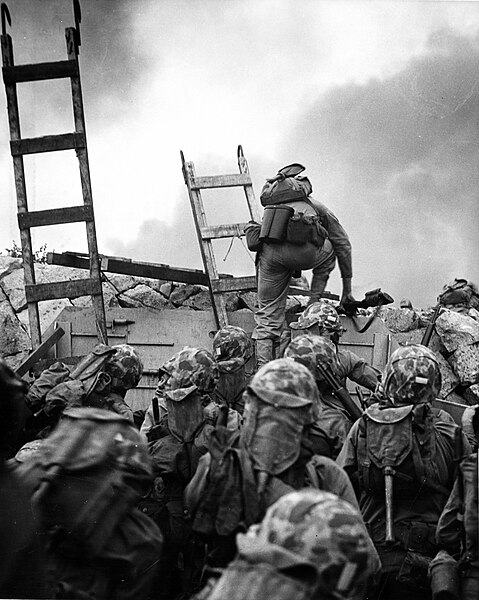
The war ended in 1953 with an armistice agreement, not a formal peace treaty, which left the Korean Peninsula divided along the 38th parallel.
The conflict is often referred to as the “Forgotten War” because it did not result in a clear victory or resolution, and the division between North and South Korea remains to this day.
Vietnam War (1955-1975)
The Vietnam War was a protracted and highly controversial conflict that began in the mid-1950s when the United States became involved in the struggle between North Vietnam, led by communist forces, and South Vietnam, which was supported by the U.S. government.
The war had complex roots in Vietnam’s struggle for independence and the Cold War rivalry between the United States and the Soviet Union. American involvement escalated over the years, with increasing numbers of U.S. troops deployed to Vietnam.
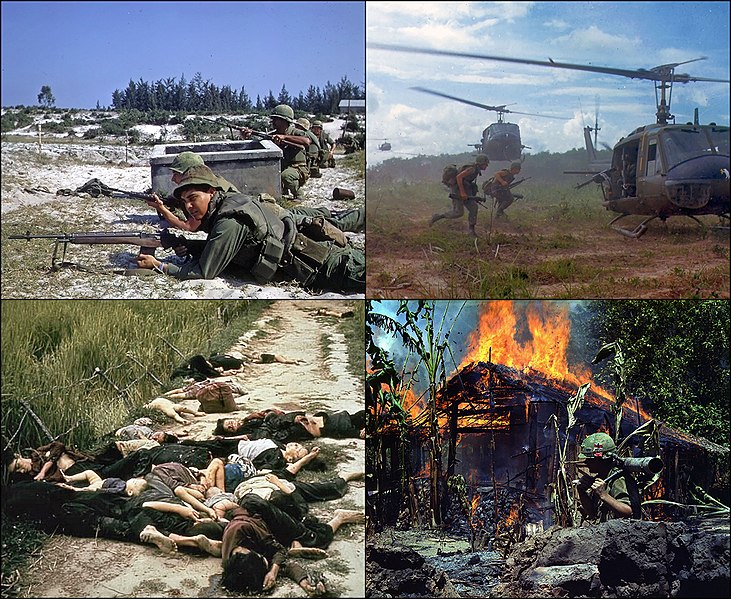
The war was marked by guerrilla warfare, counterinsurgency efforts, and anti-war protests at home. In 1973, the United States withdrew its combat troops following the Paris Peace Accords, and in 1975, North Vietnamese forces captured Saigon, leading to the reunification of Vietnam under communist control.
The Vietnam War had profound social, political, and cultural effects in the United States, leading to widespread anti-war protests and a reassessment of U.S. foreign policy in the Cold War era.
Gulf War (1990-1991)
The Gulf War, also known as the First Gulf War, was a conflict between a coalition of nations led by the United States and Iraq under the leadership of Saddam Hussein. The war was triggered by Iraq’s invasion of Kuwait in August 1990, which led to international condemnation.
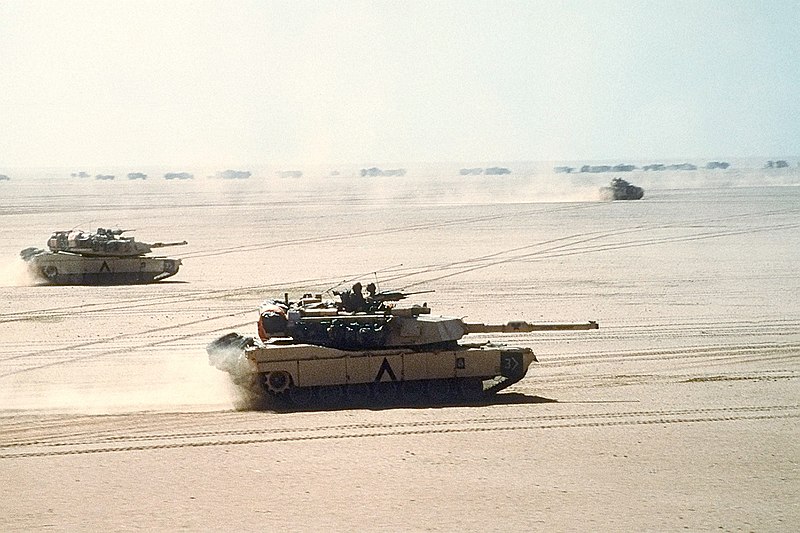
The coalition forces, including the United States, the United Kingdom, and many other nations, launched Operation Desert Storm in January 1991 to liberate Kuwait from Iraqi occupation. The war featured extensive aerial and ground campaigns, including the famous “left hook” maneuver by coalition forces.
After weeks of intense combat, a ceasefire was declared in February 1991, and Kuwait was liberated. The war did not result in the overthrow of Saddam Hussein but did lead to significant destruction in Iraq and the imposition of sanctions.
War in Afghanistan (2001-2021)
The War in Afghanistan, also known as the Global War on Terror, began in October 2001 when the United States, along with NATO allies, launched Operation Enduring Freedom in response to the September 11, 2001 terrorist attacks.
The primary objective was to dismantle al-Qaeda and remove the Taliban regime in Afghanistan, which had harbored terrorists. The early phase of the war saw the rapid fall of the Taliban, but the conflict evolved into a protracted insurgency.
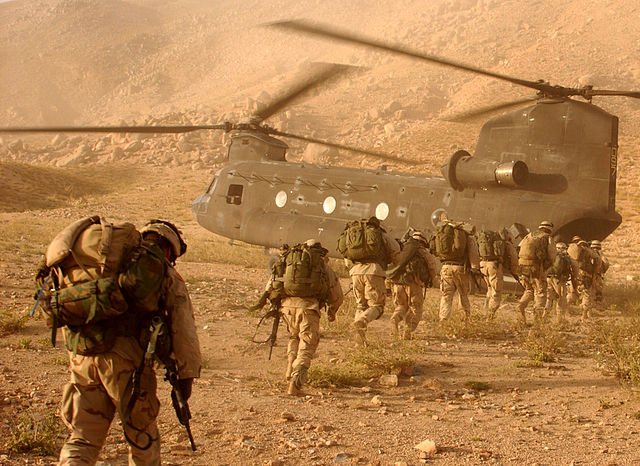
Over the years, it involved complex counterinsurgency efforts, nation-building, and ongoing security operations. The war became America’s longest-running conflict, lasting until August 2021, when U.S. and NATO forces withdrew from Afghanistan.
The withdrawal marked the end of direct U.S. military involvement in the conflict, though the situation in Afghanistan continued to evolve.
Iraq War (2003-2011)
The Iraq War, also known as the Second Gulf War, began in March 2003 when a coalition of nations, led by the United States and the United Kingdom, invaded Iraq.
The primary stated reasons for the invasion were the belief that Iraq possessed weapons of mass destruction (WMDs) and the goal of removing Saddam Hussein from power. The initial phase of the war, characterized by “shock and awe” airstrikes, led to the rapid fall of Baghdad.
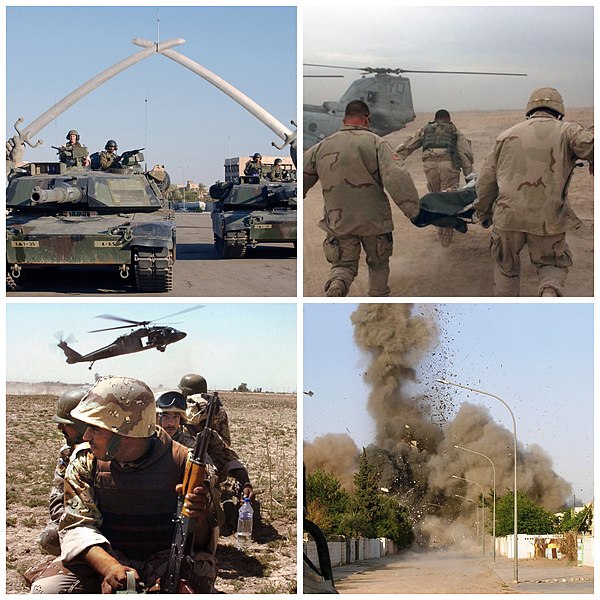
However, the conflict evolved into a protracted insurgency, with sectarian violence and instability plaguing the country. The search for WMDs proved unsuccessful, and the war became highly controversial.
The withdrawal of U.S. combat troops from Iraq occurred in 2011, but Iraq continued to face challenges related to governance and security in the years that followed.
War on Terror (Ongoing)
The War on Terror is a broader, ongoing military and counterterrorism effort initiated after the September 11, 2001 attacks. It encompasses various military operations, counterterrorism efforts, and intelligence activities aimed at combating terrorist organizations and threats worldwide.
This global effort includes not only the conflicts in Afghanistan and Iraq but also operations in other regions, such as the Horn of Africa, the Sahel, and ongoing counterterrorism efforts against groups like al-Qaeda and ISIS.
The War on Terror represents a shift in U.S. foreign policy and national security strategy, emphasizing the need to prevent and respond to terrorism on a global scale. Its scope and nature have evolved over the years and continue to impact U.S. foreign policy and military engagements.
